| Cognitive Devices |
| |
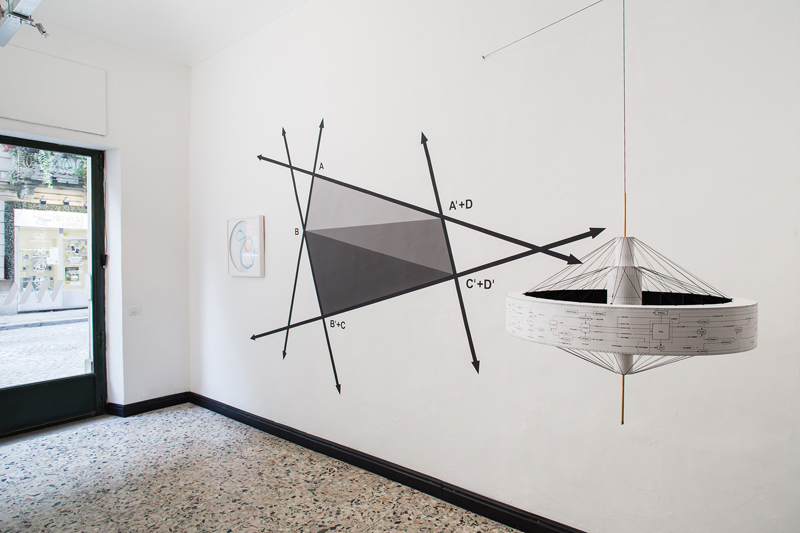 |
| |
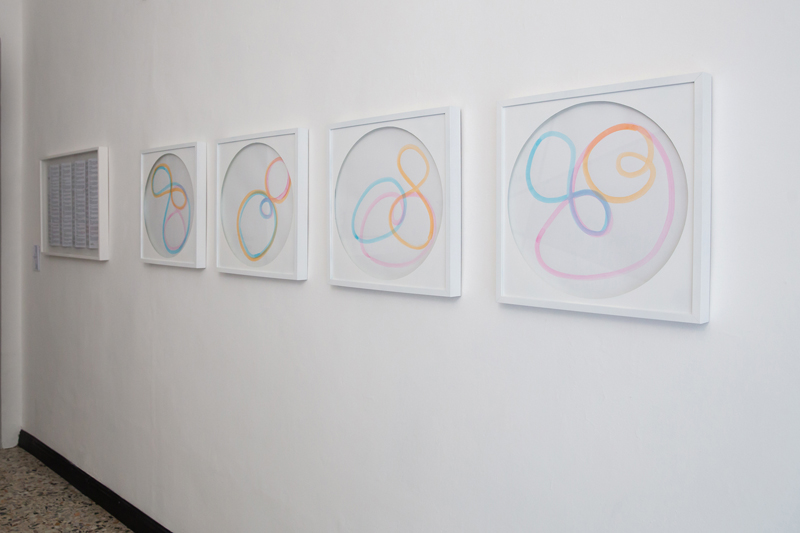 |
| |
|
Cognitive Devices is a collection of works about information, the production of knowledge, and the investigation thereof. The works explore cognitive processes and offer data about data, but more importantly, knowledge about knowledge. The works show the cognitive devices I have developed to investigate the problem, the process, and the product. It also offers a proposal that explores logic itself, where I attempt to define the shapes of thought and their interaction.
Esthetics are most beautiful when they are a by-product of theory.
|
| |
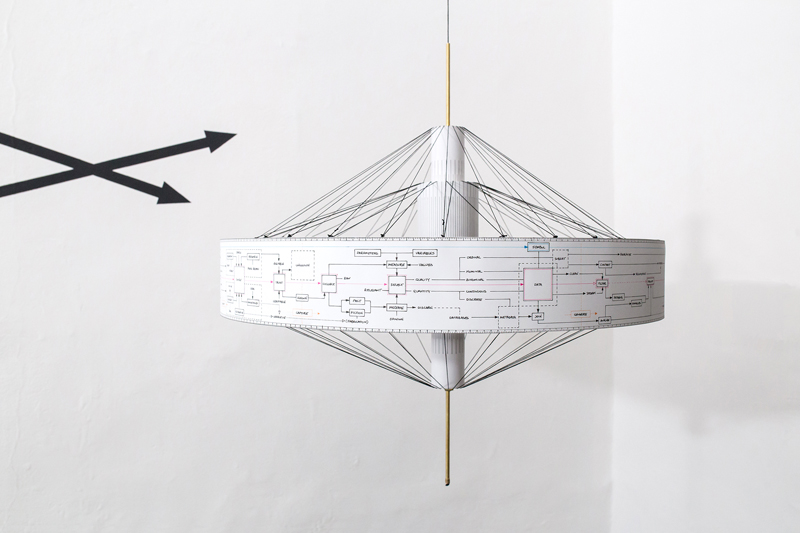 |
| |
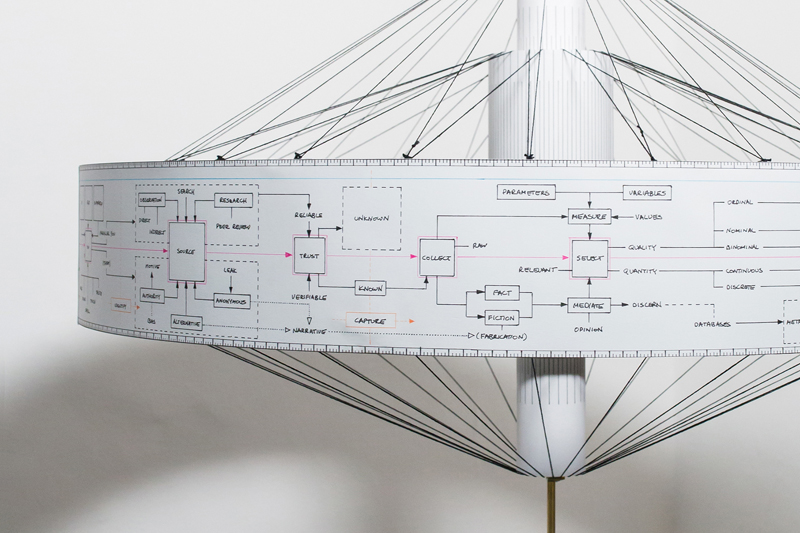 |
| |
The Shape of Knowledge
Cardboard, paper, pencil, pens, string, brass. Ø 78 x 45 cm.
The key stages of the epistemological process are source, data, information, knowledge, and finally wisdom. However, as knowledge can be passed on throughout society and over generations, it is obvious that wisdom constitutes a source of fresh data that is reiterated through the process. Humans are mostly visual thinkers, this map is an intellectual aid that can help navigate the process. The work presents itself as a suspended, consultable device with which one can explore and investigate the abstract space of knowledge and its variables. |
| |
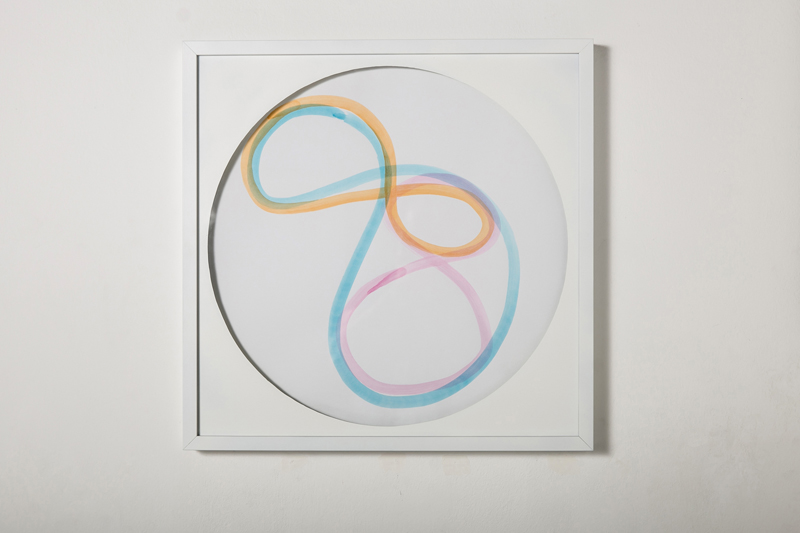 |
| |
The Shape of Thought
Acrylic paint, paper, custom frames. Edition of 6. 50 x 50 cm.
Logic processes are often portrayed as flowcharts or circuits, reminiscent of computing. Yet on an instinctive level I think that the circular nature of mulling over a subject can not be reconciled by mere ‘logic gates’ embedded in microscopic circuitry. Possibly as a built-in redundancy, human thought processes are always reiterated processes – we can think something over and over, switch angles, and pose innumerous what-ifs - where the answer is hardly as clear-cut for humans as it can be for binary systems. This raised the question, what is the shape of thought?
I feel that functions like ‘if/then’, ‘and/or’, ‘for/then’ or ‘goto’, which are fundamental building blocks to precursor computer languages like BASIC, are also base logic functions in human reasoning, after all we create our technology in our image. If we start with the premise that a circle can represent a fact or a completed and unambiguous logic loop, we can speculate on the shapes of aforesaid logic functions. An internal knot could represent an ‘if/or’ function, where the size indicates the extent of the dilemma, an external knot could be a simple ‘and’ function, a spiral knot could be a reiterated thought, much like a feed-back loop of filtered information. Normally, unless we are contemplating extremely simple questions, our logic loops entangle with others because they are interdependent. For example, an ‘if/then’ loop could coincide with the ‘and’ function of an ‘and/or’ loop, and also be wholly contained within a larger, complete logic loop. I like to think that further speculation into the topology of thought could yield interesting parallels both in the emerging mathematical discipline of knot theory, and maybe even certain elements of string theory. |
| |
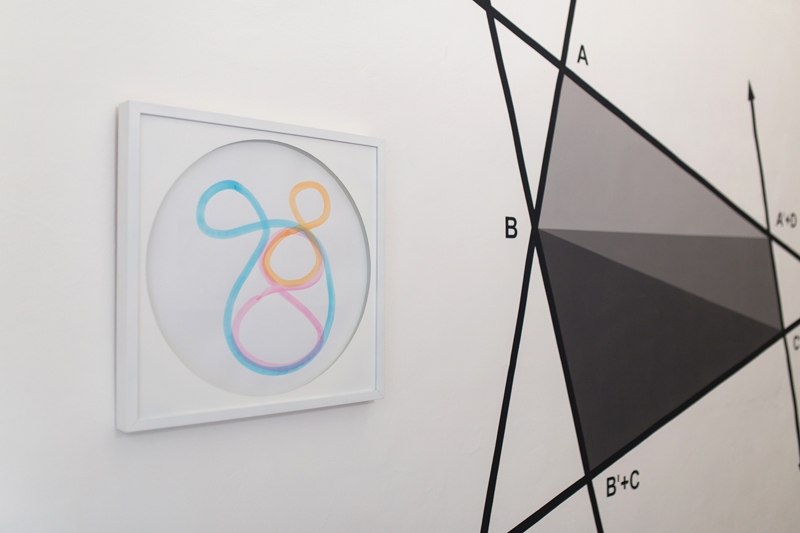 |
| |
The Shape of the Problem
Acrylic paint. Circa 340 x 230 cm.
When dualities are laid out to form a spectrum, they form a linear expanse that can be pondered. However, to define the space that a question occupies, we must start by constructing a grid of the dualities that encompass the problem. For example, in the analysis of True Vs. False we may add a second dimension, let’s say Fact Vs. Opinion, and a third one which could be represented by Know Vs. Believe. The space that results is the question, and that question can only be answered by the phenomenon residing in that space, and along the vectors that define it. Everything outside of this area may be knowable, but it is not part of the question. |
| |
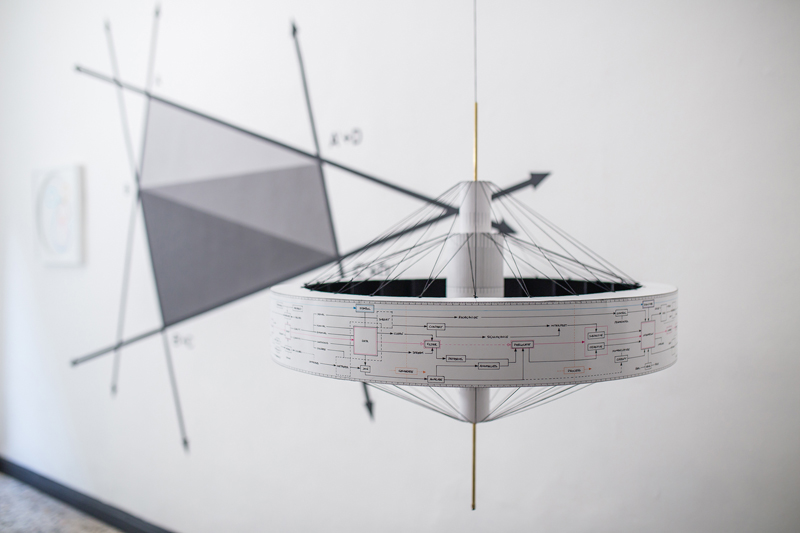 |
| |
| Location: Wild Mazzini Data Art Gallery, Torino / Photos: Daniele Baldi |
| |